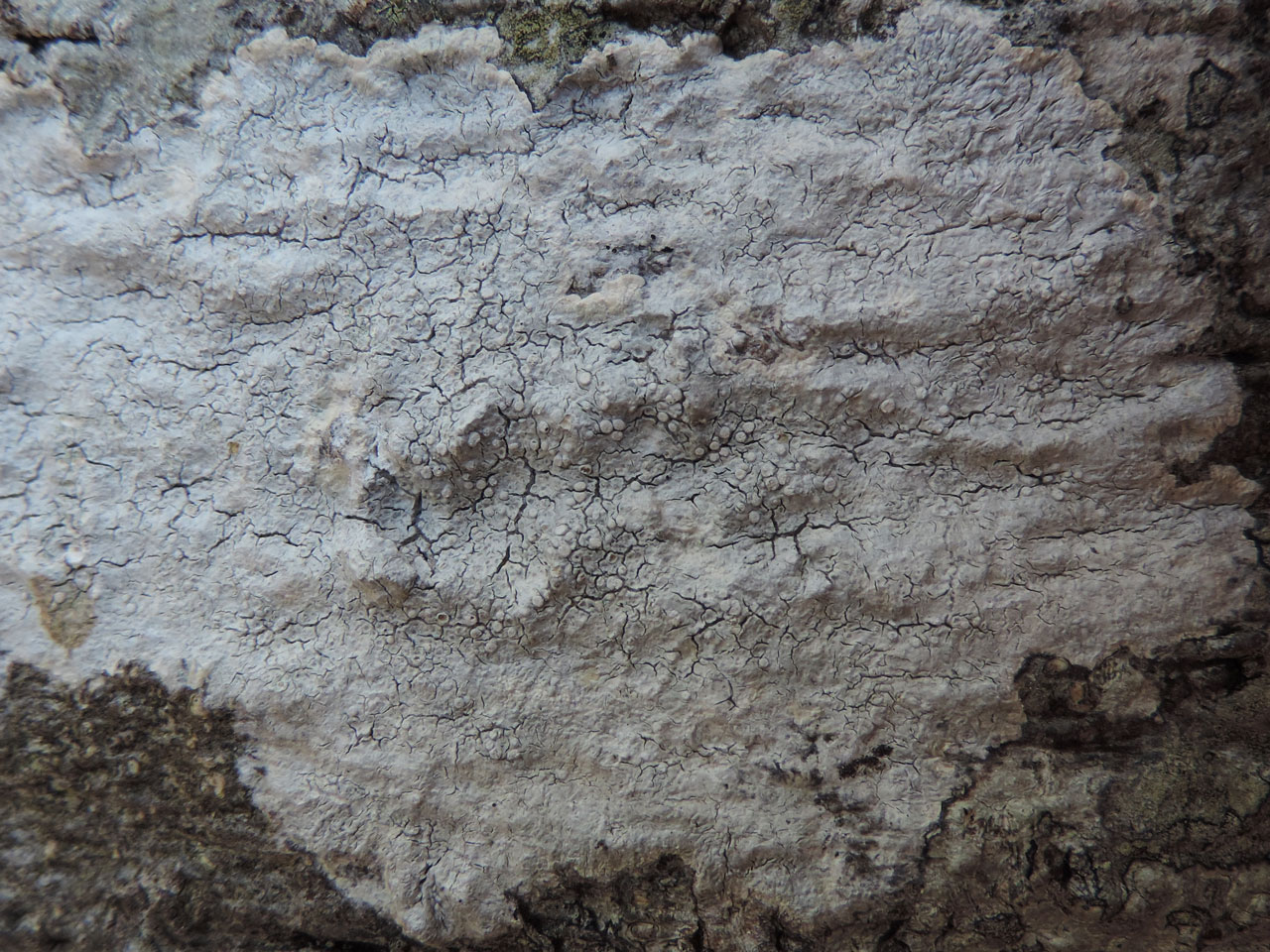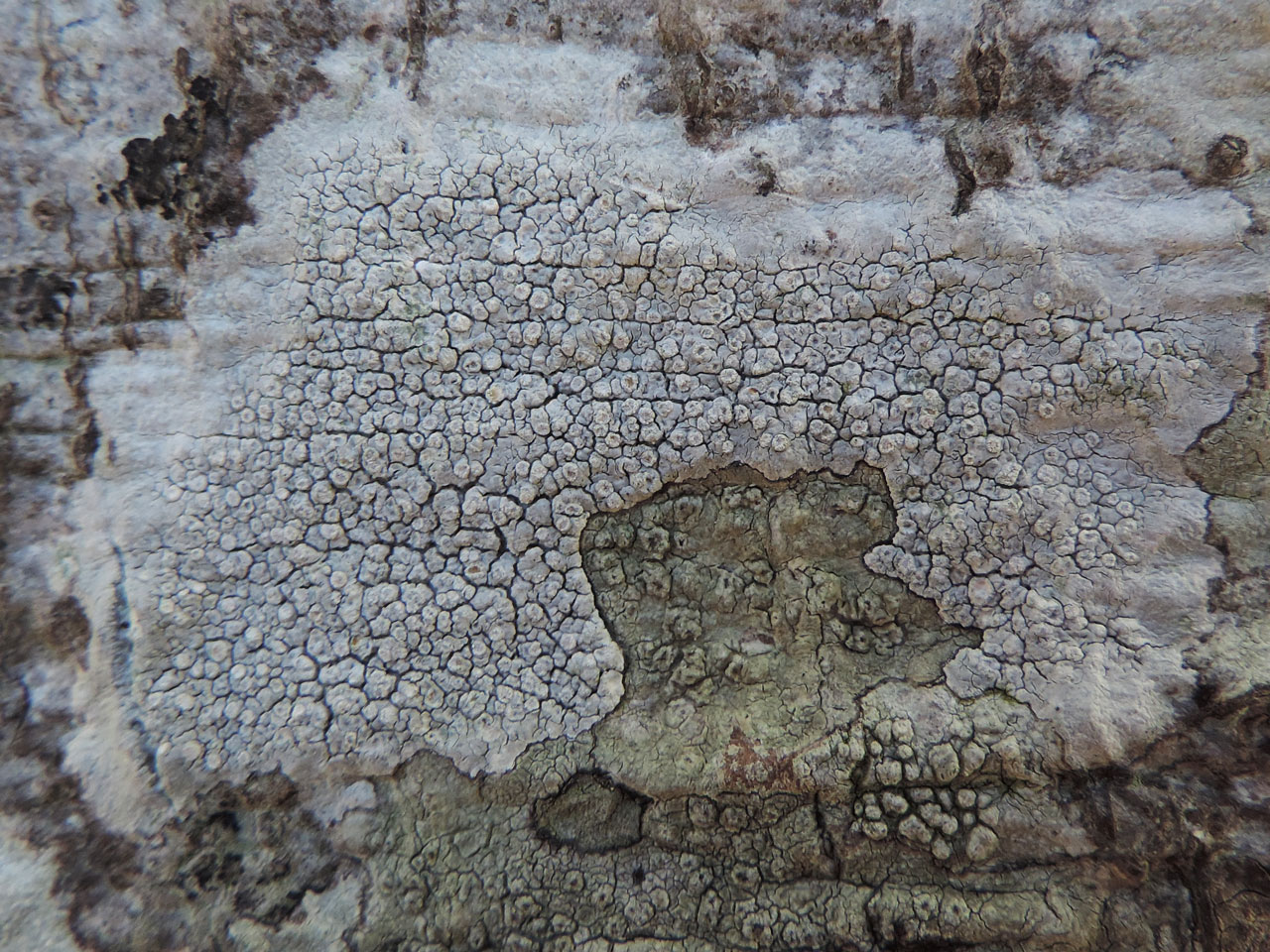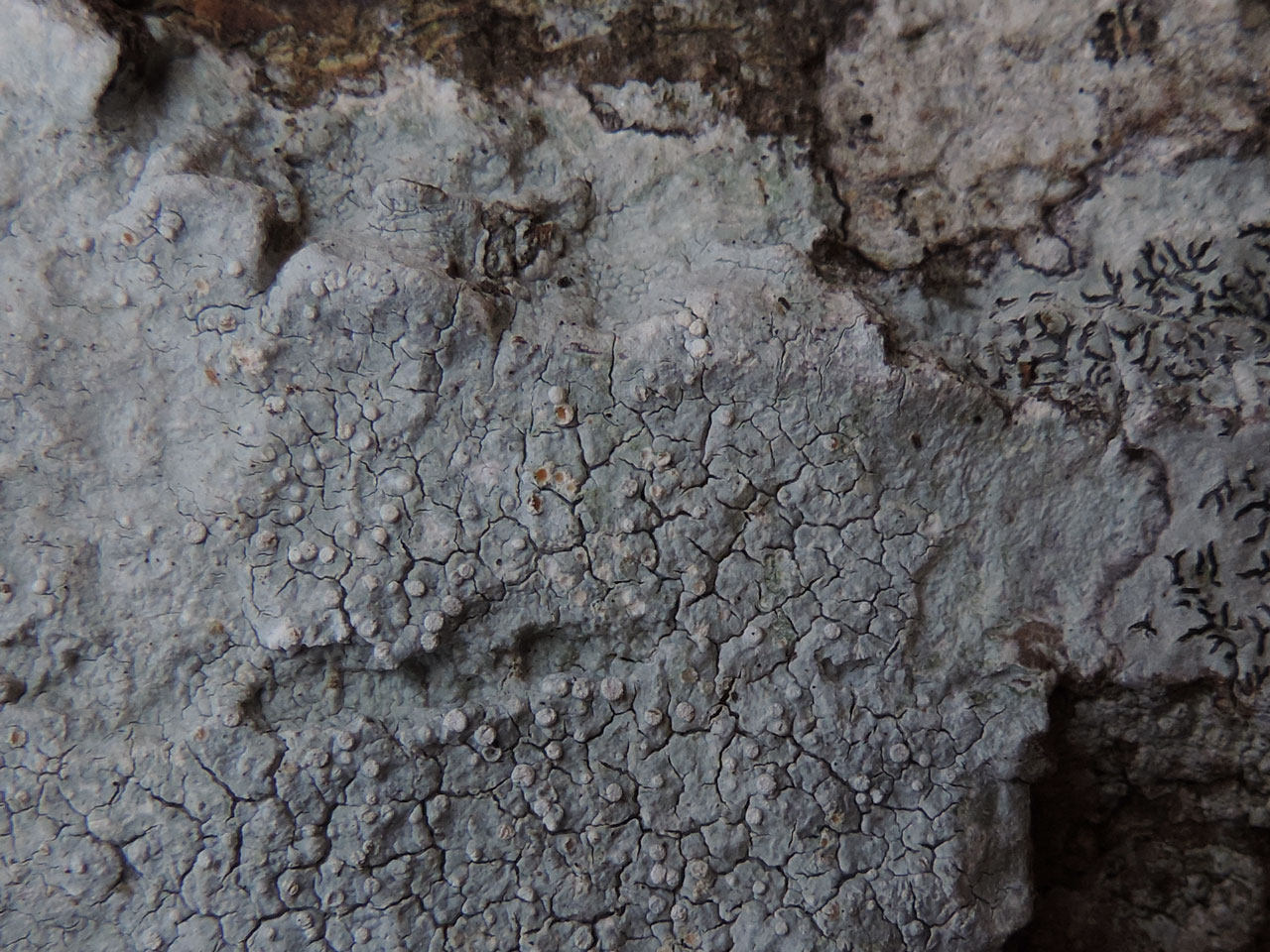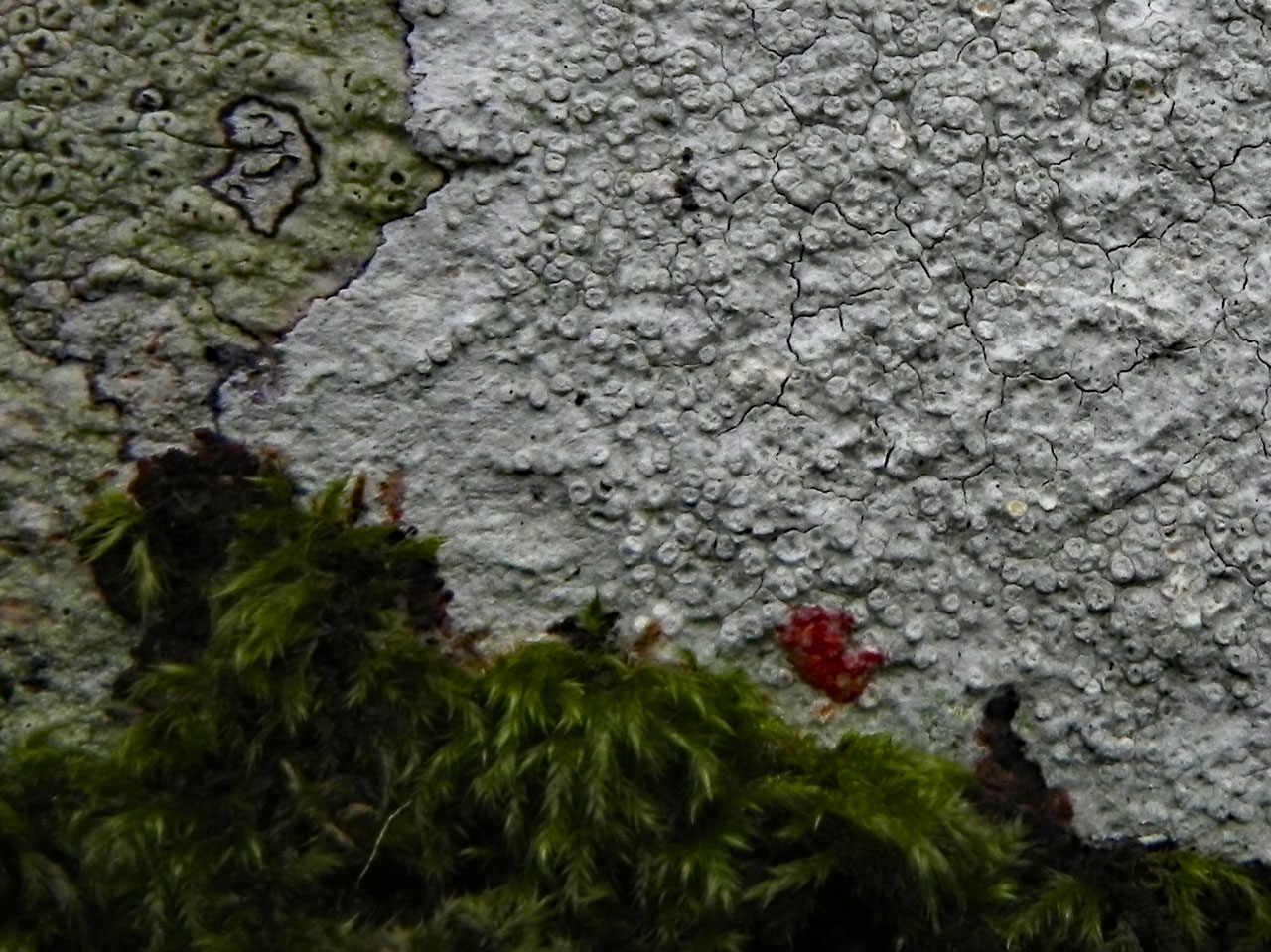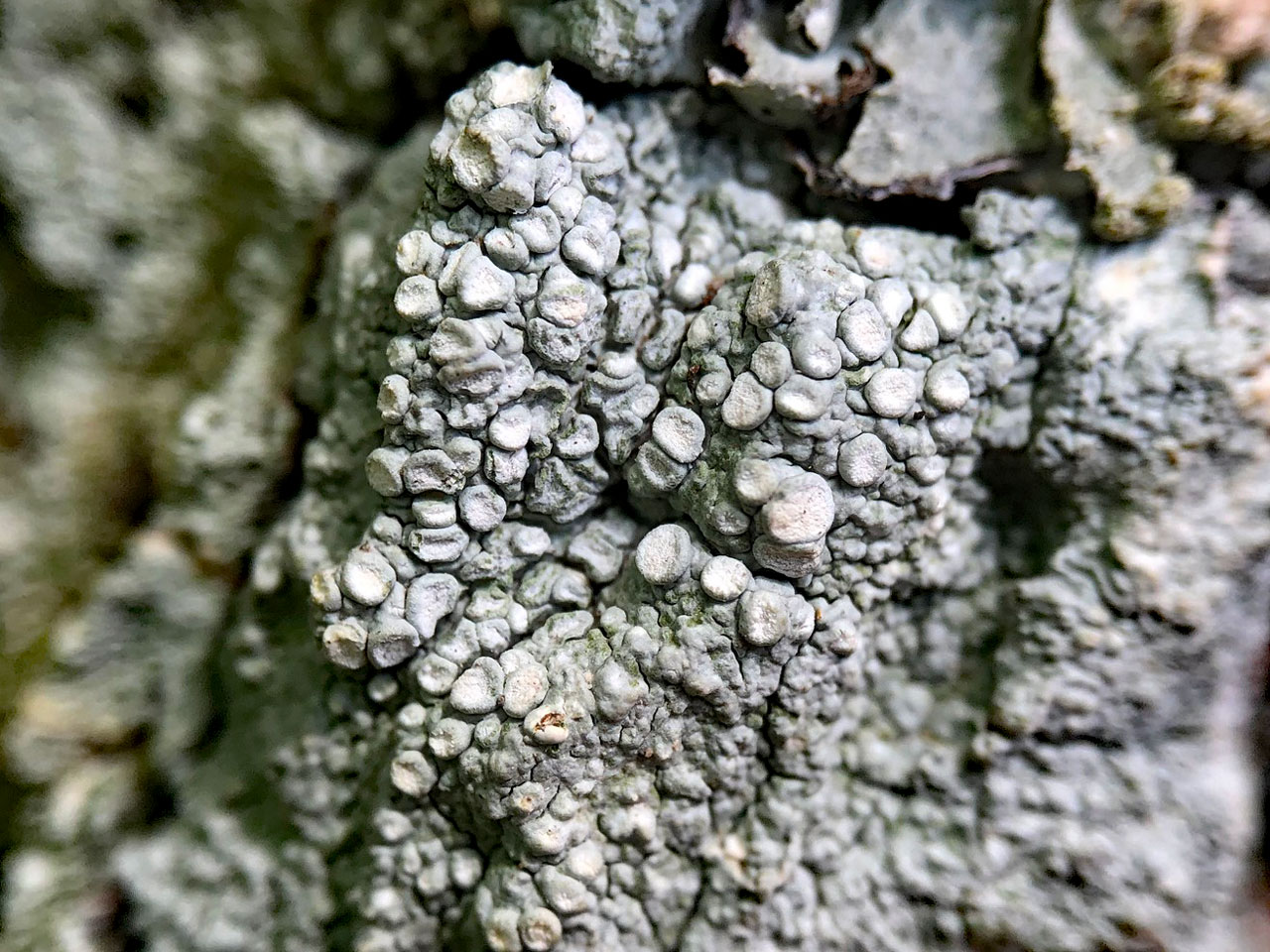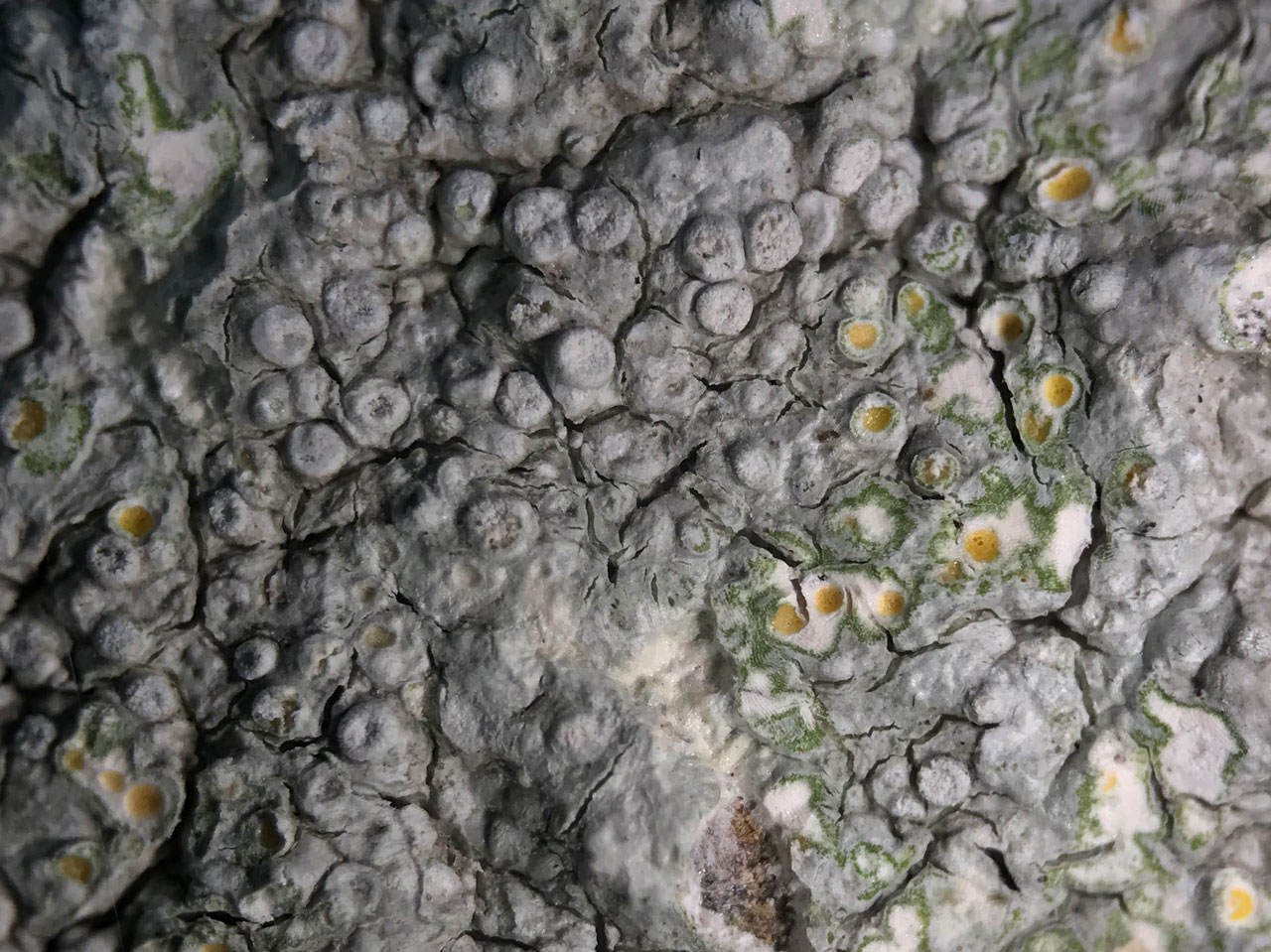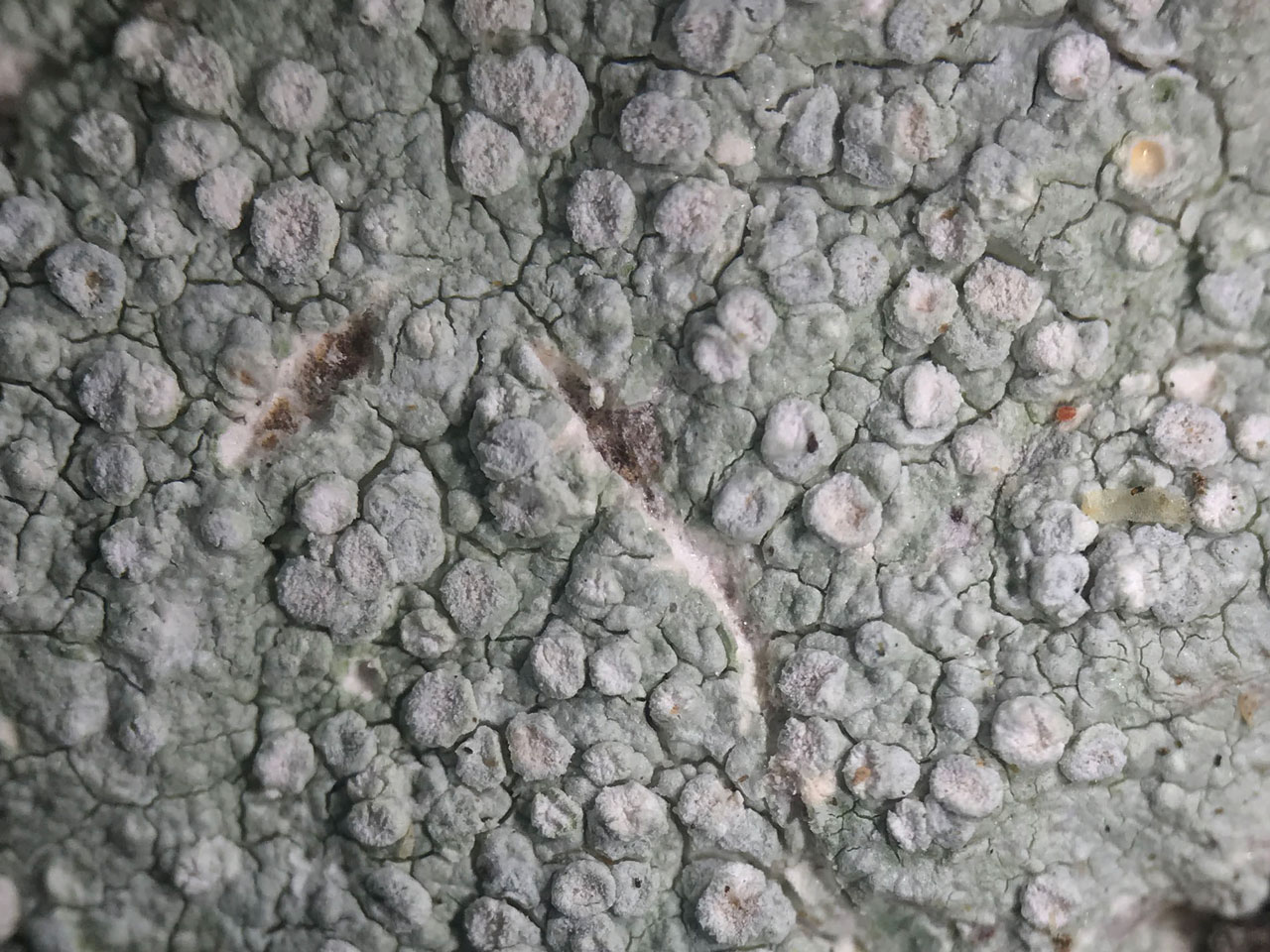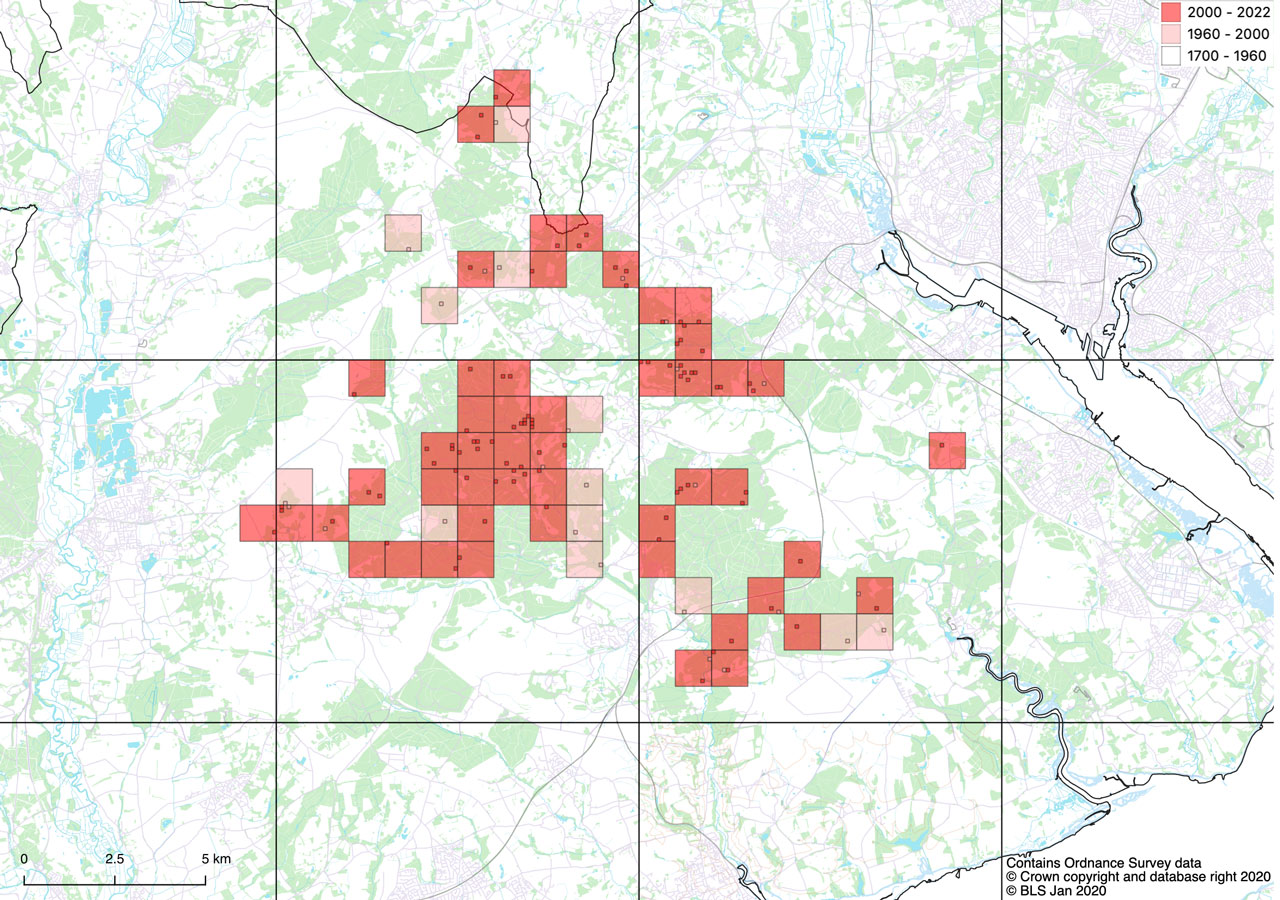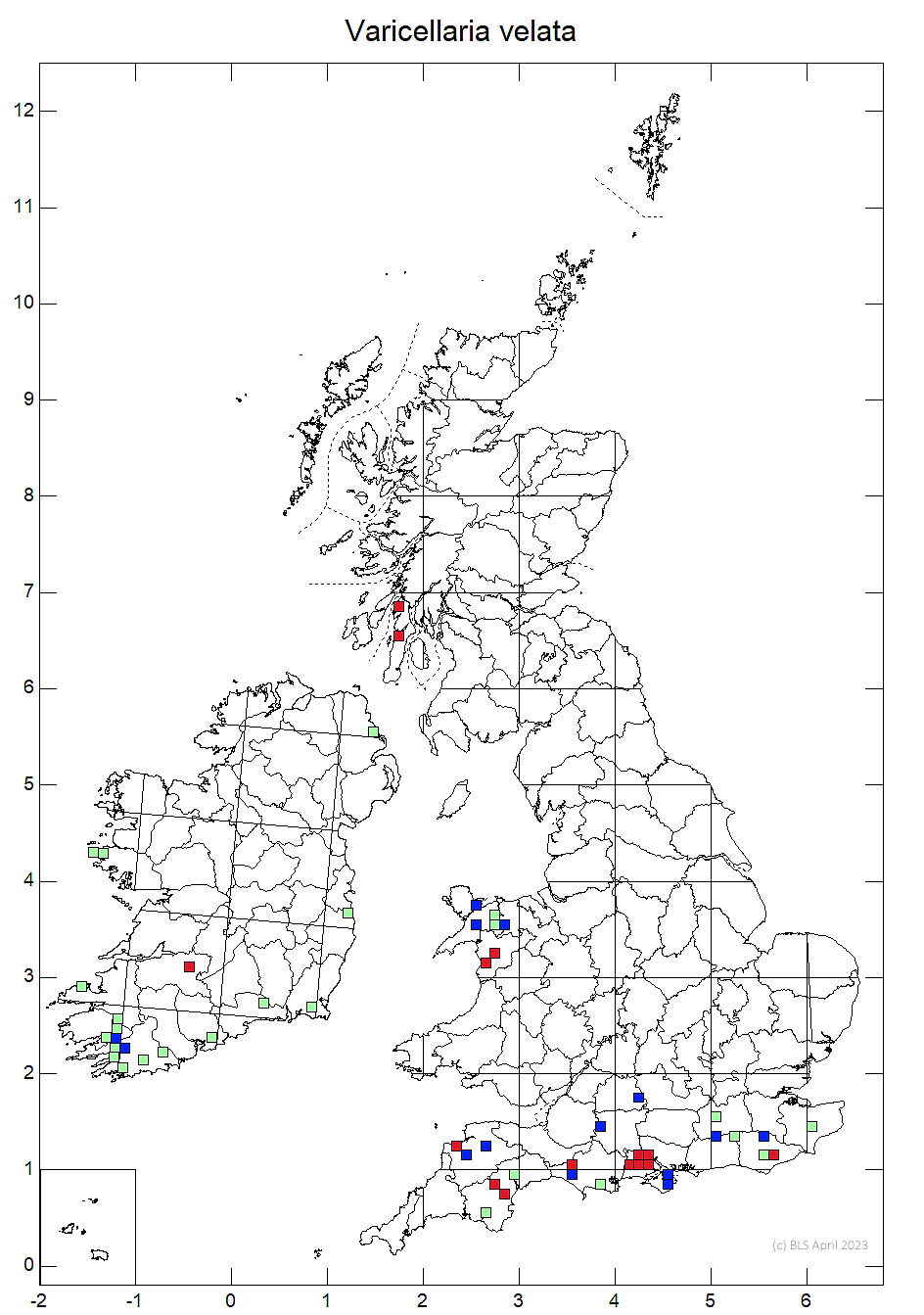Varicellaria velata grows on mesic bark on glade and wood edge veteran tree in mosaics with other Pertusaria type lichens. It never dominates but usually occurs as isolated thalli, with rarely more than a few thalli on one tree, and is often only found on a few trees in a site. It appears to be a threatened old growth species thoughout much of its range and grows in a very vulnerable habitat of well lit wood edge veteran trees. Easily over looked as other Pertusaria type lichens, especially Varicellaria hemisphaerica, but this is never fertile and the C+ red disk and margins separate it from all but epiphytic Ochrolechia parella. The latter, however, has much larger apothecia and has a C+ yellow thallus. In addition, the UV+ orange medulla is a useful non-destructive alternative to the C+ red apothecia in confirming this rare species in the field and can identify sterile thalli, but the medulla is not always exposed.
Thallus thin to rather thick, white to pale grey or glaucous, smooth to ± coarsely wrinkled and ± rimose-cracked, seldom completely areolate. Fertile warts 0.5–0.8 (–1.2) mm diam., numerous, scattered or crowded, rounded, flat, ± constricted at the base; apothecia 1(-2) per wart; disc pale pink or reddish but often ± densely white- pruinose, C+ red; thalline exciple well-developed, 0.2–0.25 mm broad, smooth or ± crenate, somewhat raised, persistent; epihymenium with numerous crystals, K–. Asci 1(-2)-spored. Ascospores 150–280 (–310) × (40–) 57–90 μm, wall 9–15 μm thick, not laminate. Thallus K–, Pd–, UV–, apothecial margin and disk C+ carmine-red, medulla UV+ orange (lecanoric acid, ± lichexanthone).
Sometimes confused with Varicellaria hemisphaerica, which occurs in the same habitats but is sorediate and unknown fertile. The UV+ orange medulla is a useful non-destructive alternative to the C+ red apothecia in confirming this rare species in the field and can identify sterile thalli.
On mesic bark on sheltered but well-illuminated trunks of veteran trees, particularly Fagus, Quercus and Fraxinus, in ancient woodlands and parklands. Very local, confined to high quality sites and rare and declining outside of the New Forest, where there is a very strong population, mainly on veteran Beech.

South England (especially Hampshire, New Forest), N. Wales, W. Scotland, S.W. Ireland.
An old growth dependant lichen, which, outside of the New Forest, a very rare species, mostly only known from a very few trees at each site. A light demanding species and likely to be vulnerable to over shading but also absent from very open sites and is very much a wood and glade edge species.
Britain: Vulnerable, International responsibility Species
England: section 41 species
Wales: section 7 species
Scotland: Priority Taxon for Biodiversity in Scotland
Cannon, P., Kukwa, M., Coppins, B., Fletcher, A., Sanderson, N. & Simkin, J. (2021). Pertusariales: Ochrolechiaceae, including the genera Lepra, Ochrolechia and Varicellaria. Revisions of British and Irish Lichens 5: 1-17.
Text by Neil A Sanderson based on Cannon et al (2021)
